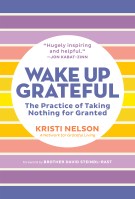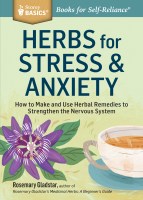When Sleep Won’t Come: Meditation for Insomnia
When gripped by sleeplessness, a middle-of-the-night meditation session can bring big benefits and doesn’t require that you follow rigid rules. In fact, you don’t even need to leave your bed.

It’s four in the morning, and you’re wide awake. Anxiety wraps itself tightly around your chest, and your head is awash in worries. And now you’re also worrying about not getting enough sleep. You count the hours until your alarm will ring, add up the hours you’ve slept so far, subtract from eight, and grow angry at the impossibility of any of this adding up to a good night’s sleep. You try to march your mind back into sleepiness by counting backwards or trying to remember the names of everyone in your first-grade class — all in a desperate attempt to nod off.
But this early morning period of wakefulness, so dreaded by insomniacs, is by contrast courted by meditation masters, monks, and mystics. Intentionally waking before dawn, they meditate in the quiet and stillness of these early hours.
Meanwhile, most of us can’t seem to find time to meditate during the busy day. Even 20 minutes seems like too much when you have work, family responsibilities, a home to care for, and social engagements. You may have social media pages to maintain and keep up with, as well as streaming music and television series competing for your attention. But at four o’clock in the morning there’s nothing on the calendar, no phones ringing, and the laptop is sleeping — even if you aren’t. So why not use this time to meditate?
After all, meditation is a proven natural and effective antidote to insomnia. Plus, it’s better to feel a little holy rather than wholly frustrated when you’re up, especially if your loved one snores serenely nearby.
You need not follow rigid rules for a middle-of-the-night meditation. You don’t even need to leave your bed. Unlike in formal meditation, when it’s considered bad form and a sign of flagging focus to doze off, when you meditate on the mattress for relaxation, falling asleep is an added bonus. Sure, the meditation practice was cut short, but then again you got some much-needed sleep. Plus, if you do slip into sleep directly from meditation, you’re more likely to experience clear and, sometimes, even lucid or luminous dreams.
Then again, if you don’t fall asleep, you’ve still managed to meditate for 45 minutes to an hour, thus achieving an equally beneficial outcome — you’ve reaped the rewards of a successful meditation session, which include reduced stress, improved heart health, and a boost to your mood. And since brain scans of people in deep meditation resemble those of people in deep sleep, you’re likely to start the day feeling rested, too.
Beditate
Effort is the enemy of sleep. So, stop trying so hard to catch some z’s. Instead, bring the wisdom of meditation as well as simple relaxation techniques to bed with you.
Count Breaths, Not Thoughts
The late-night brain is notably low on serotonin and other neurochemicals that help boost our mood by day. Therefore, nighttime — when our minds are likely to devolve into pessimism and negative thinking — is no time to ponder problems. Instead, puzzle over something neutral. Numbers, rather than words, work best for midnight meditations. Count backward by threes from 300 (i.e., 300, 297, 294). Or count your breaths one by one, starting at 10 and working backward. When you get to 1, start at 10 again, repeating the process until you doze off. Bring your full attention to each number as you count down, leaving no room in your mind for worrisome thoughts.
On the Pillow
You can sit up in bed and meditate or lie on your back with your arms at your sides (think savasana, or relaxation pose, from yoga class). You may prefer to rest the palms of your hands on your abdomen, which can help you feel calm.
Hit Play
Keep an MP3 or CD player loaded with ready-to-play guided meditations by your bed. When you can’t sleep, just press play, listen, and relax. (To find some good recorded meditations, you can do an Internet search, browse your local bookstore, or ask a yoga or meditation teacher for suggestions.)
Productive rest
Happily, there is a way to get some deep rest, even if you can’t sleep. The practice of yoga nidra, or yogic sleep, is a form of meditation that helps you feel refreshed and at ease, and may even make you feel as if you’ve slept deeply. Yoga nidra is also said to reduce tension, ease anxiety, and support and strengthen the immune system.
The practice, which involves bringing attention systematically to each part of the body, is simple and easy. Done during the day, yoga nidra allows you to enter a state close to that of dreamless sleep while remaining awake and aware. At night, for help sleeping, you can follow the same process but without the intention to remain awake.
Yoga Nidra Basics
To practice yoga nidra, you will scan your body in a slow, methodical, thorough way, resting your full and relaxed attention on each part of your body for the length of a breath or two. Although you will feel very relaxed during this process, try to stay aware and awake. But don’t worry if you fall asleep or if you don’t follow the instructions precisely. These are general guidelines, and there are many variations to this practice. However, if you are practicing yoga nidra during the day and want to be sure you don’t fall asleep, set an alarm to signal the end of your practice, just in case.
I recommend giving yourself 20 to 40 minutes for this leisurely exercise. You can find recordings online or on CD that will guide you through yoga nidra, or follow the basic steps listed at right.
- Lie on your back on a yoga mat on the floor or on another soft yet supported surface. Cover yourself with a sheet or blanket to stay comfortably warm and relaxed.
- Close your eyes and allow your arms and legs to open at a slight angle so they are not touching the body or each other, as in savasana.
- Spend a minute or two observing the breath rise and fall in your belly, allowing your breath to slow down and lengthen as your thoughts, too, begin to slow.
- Rest your attention on your mouth, including lips, tongue, gums, and jaw. Observe each part of the mouth for the length of a breath or two.
- Continue to move your relaxed, nonjudgmental, curious attention methodically along your body, resting your awareness on each part:
- Your head, including ears, nose, eyes, forehead, scalp, neck, and throat, inside and outside
- Your arms, one at a time, including the shoulder, upper arm, elbow, lower arm, wrist, palm of the hand, and each finger, one by one
- Your torso, front and back, including your upper chest, solar plexus, belly, and abdomen
- Your pelvis, hips, sacrum, base of the spine, and genitals
- Your legs, including the upper leg, lower leg, ankles, top of the foot, bottom of the foot, and each toe, one by one
- When you have completed your scan, bring your attention back to the room you are in, notice the sounds, the sensations on your skin, and the weight of your body resting on the mat or other surface.
- Turn on your side and rest for a few more breaths. When you are ready, gradually move to a seated position. Take your time getting up.
Text excerpted from The Mindful Way to a Good Night’s Sleep © Tzivia Gover.











